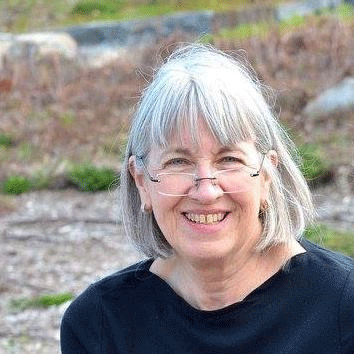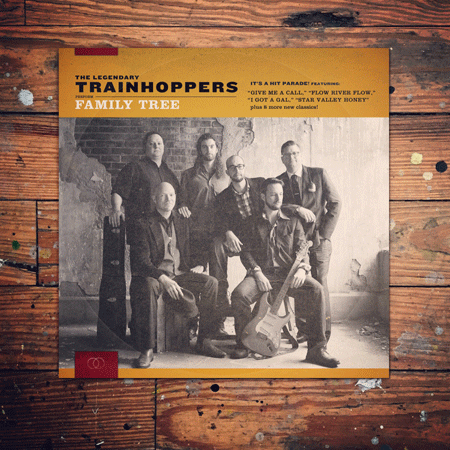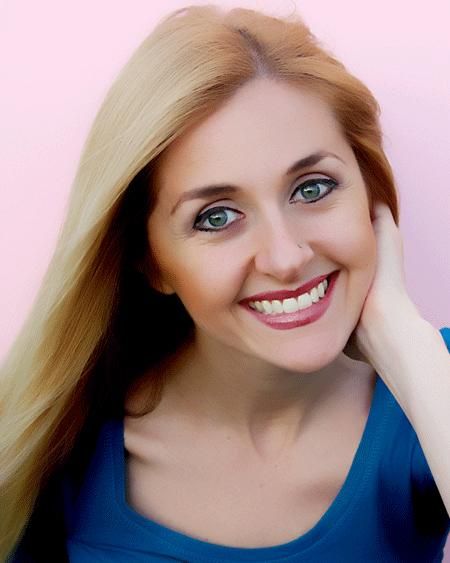Look at a painting by Cathy Blyth and you’ll see fields of thick acrylic color stretching across the picture plane overlapped by slashes, smears and scrapes. followed by more color. She is an abstract expressionist, a painter who follows the footsteps of a movement in which the artists capture emotion on canvas, sometimes sustained and other times fleeting. It is a genre that Blyth represents well. She cites Mark Rothko as a painter with a body of work that empowers her own.
“I saw a retrospective of his work,” Blyth explains. “Standing in front of his paintings was a spiritual experience for me.”
Blyth strives to capture the essence of a moment. Her most influential mentor, her college professor, William M. Halsey, summed up the intention when he said, “I try to paint not a description, not a picture, but an essence, the essence of a place, a feeling, a thought.”
Blyth works with acrylic. As each layer is added, texture builds up, and so does the tension of the piece. As she works, Blyth scratches and digs at the paint allowing the deepest layers to peek out. In some pieces bright colors peer through heavy dark hues, giving the composition the power to evoke strong feeling. Her work lets us know that even in our darkest hours, if we can weather the storm and dig within ourselves, there is light and vibrancy to be found.
As Blyth works, some shapes disappear while others are revealed. Geometric shapes, often squares and rectangles are put down on the canvas and reworked over and over again. Dark, energetic grids bring order to the chaotic scramble of color in pieces such as “Stained Glass” and “Entropy.”
“My abstract work evolves,” says Blyth “through a process that is an intuitive interaction between composition and the application and excavation of color and an excavation and building of layers upon layers of composition and color.” Her process is purely intuitive. She begins not with sketches or plans but with a desire to capture a moment with paint.
“There is no narrative, no explanation, no direct references,” she explains. “Any conscious attempt at narrative disrupts the intuition, and the process comes to a halt. I cannot know where I am going when I start, but must trust myself to get to the end. The painting is lifeless until all of a sudden it is not. I remain in tension until released.”
People drawn to Blyth’s work on an emotional level often can’t identify exactly why. Each painting is a conglomeration of complex human feeling in the visual form. Perhaps viewers connect deeply with her work because it comes from a place of honesty within the artist.
“I don’t usually preconceive where I am going when I start a painting and usually do not end up where I began,” says Blyth when describing her approach.
Blyth is bold and brave at the easel – not afraid to face head on whatever sentiment that may be rumbling in the back of her mind. She confronts each canvas with intense contemplation and texture plays an important role in capturing the tone.
With the addition of cheesecloth, some of her paintings become almost sculptural. Folded and bunched up lengths of fabric are added directly to the canvas then painted until they blend and complement the background. The fabric brings forward color and adds another layer of energy and interest to the work.
Blyth’s bold, passionate pieces are balanced by serene, ghost-like depictions of landscapes. When paired on the wall with her brightly colored works, her pieces painted in soft, muted tones allow the viewer to take a breather, a moment to relax, before moving on to the next geometric abstract. Peaceful and inviting, Blyth’s landscapes give us a hint of what life could be or a mourning of what life once was and is now lost.
Like many artists, Blyth is skilled in more than one medium. She is a very adept textile weaver and has projects large and small in her studio to prove it. A large loom, constructed by her husband, stands next to her studio easel. The loom is warped and ready, as it supports a long-term work in progress.
Her work with fiber began after a move to Indiana from New York City. She was faced with a series of great life challenges that threw her world off orbit, and she slipped into a major depression. After taking some community classes, she decided to buy a loom with the bit of savings she brought with her from New York. With the fabric left to her by her mother, Blyth set to work weaving rag rugs. It was a process that she could handle in her delicate state. During this period she convinced herself that art needed to be functional, and thus painting was a self-absorbent waste of time.
The rugs were practical, so she kept on weaving until she happened to walk into a show at the Fort Wayne Museum of Art. There she saw a collection of works by Vera Klement. Blyth was blown away by the power of her work It was then that she knew she must paint again.
After auditing advanced painting classes with Tim Parsley and Tom Keesee at the University of Saint Francis, Blyth left with the confidence and skills that allow her to paint the way she is today.
“There used to be a big black round thing inside me blocking all the light. I could just see shining around its edges from behind. I couldn’t get or see around it. I didn’t know what it was. It’s not there any longer,” she says.
Art brought this artist back to life and presented her with the blank pages of a new chapter just waiting to be written. Contemporary art lovers in this region are on the edge of their seats and waiting to see what comes next.
 Submit Your Event
Submit Your Event


